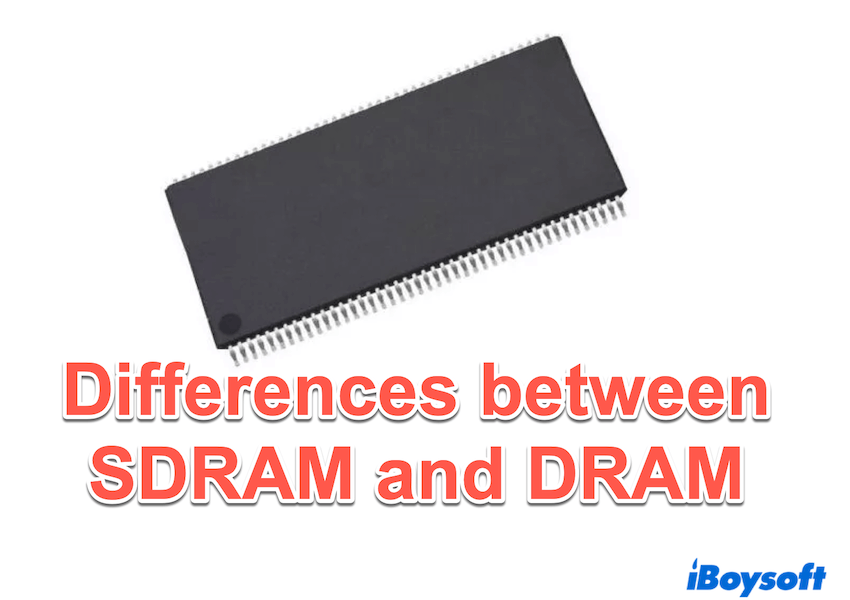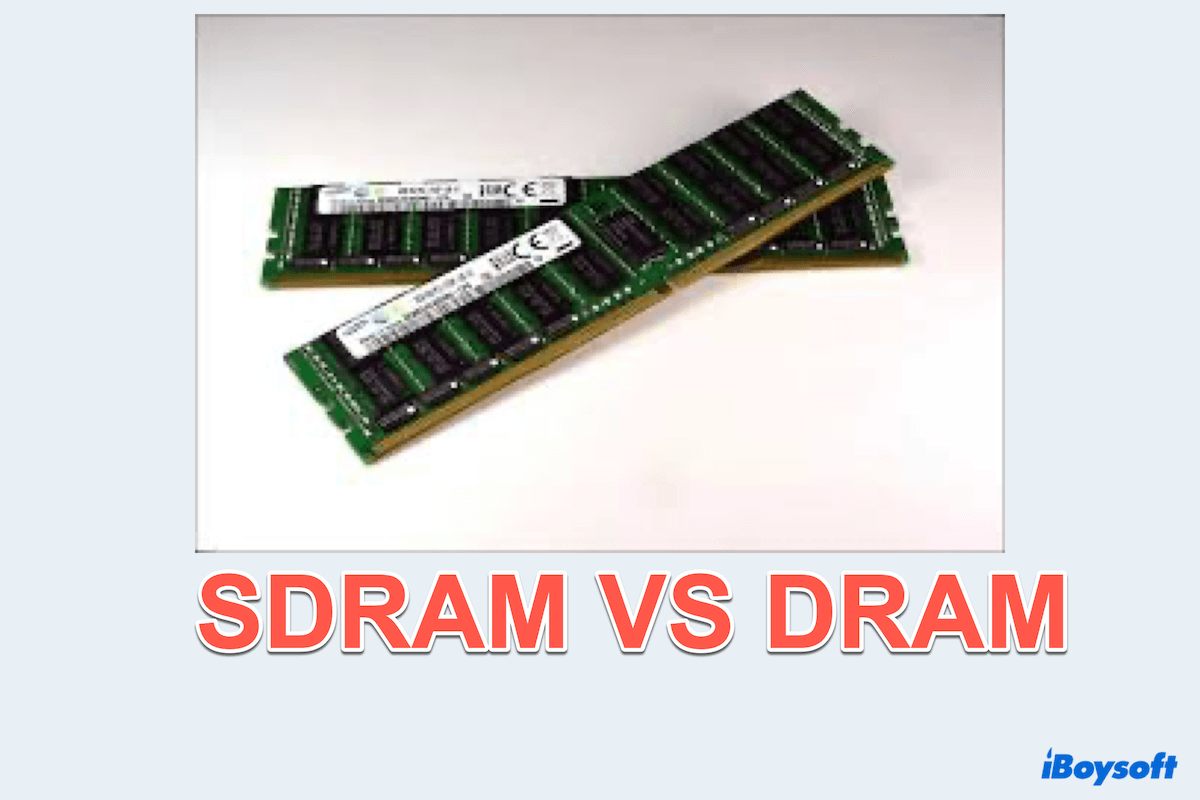In the world of computer memory, two types often come up in discussions: SDRAM (Synchronous Dynamic Random-Access Memory) and DRAM (Dynamic Random-Access Memory). Both are crucial in computing, but each serves its purpose differently.
This article explores these two memory types, highlighting their characteristics and differences to determine which is better suited for modern computing needs.
What is SDRAM?
As the name suggests, SDRAM operates in sync with the system clock. This synchronization allows it to process instructions in a more orderly fashion, making it more efficient and faster than its predecessor, traditional DRAM.
SDRAM is divided into multiple internal banks, which enables the memory to handle multiple tasks simultaneously by queuing them up and executing them in sequence.
Since SDRAM operates in sync with the system clock, it can perform multiple operations in a single clock cycle. This capability makes SDRAM a preferred choice in contemporary computing environments, from personal computers to servers and even in gaming consoles.
What is DRAM?
DRAM is a type of memory that has been around since the early days of computing. It stores each bit of data in a tiny capacitor, which leaks over time, requiring constant refreshing to retain the information. This refreshing process is where the term "dynamic" comes from, as opposed to SRAM (Static RAM), which doesn't require refreshing.
One key characteristic of traditional DRAM is that it operates asynchronously. This means that its operation is not synchronized with the system clock. As a result, DRAM's performance is less predictable and generally slower compared to SDRAM.
Despite its slower speed, DRAM is simpler and less expensive to produce than SDRAM. It was widely used in early computing systems and is still found in some specialized applications where cost and power consumption are critical factors.
You can see this table of SDRAM and DRAM
| Basic structure | Operation | Use cases | |
| SDRAM | Similar to DRAM with additional synchronization circuity; Divided into banks, allowing for pipelined operations | Synchronized with the system clock; Can perform multiple operations within a single clock cycle | Common in modern computing systems; Basis for more advanced types of memory like DDR (Double Data Rate) SDRAM |
| DRAM | Capacitor-based memory cells; Require regular refreshing to maintain data | Asynchronous operation; Data access speed depends on the memory controller and bus speed | Early computing systems; Still used in some specialized applications where cost and power consumption are critical |
If you feel this table is useful, why not share it?
SDRAM vs. DRAM: The Main Differences
When comparing SDRAM and DRAM memory, several key differences stand out:

| SDRAM | DRAM | |
| Synchronization | Synchronous operation with the system clock | Asynchronous operation |
| Performance | Faster, with the ability to perform pipelined operations | Slower, dependent on memory controller speed |
| Complexity | More complex with additional features like banking and pipelining | Simpler design, fewer features |
| Cost and availability | More expensive, but widely used due to better performance | Typically cheaper, but less common in modern systems |
Please share this post with more people.
Conclusion
So, which is better: SDRAM or DRAM? The answer depends on the specific use case. For modern computing environments that demand high-speed data processing and efficiency, SDRAM is the clear winner. Its synchronized operation and ability to handle multiple tasks simultaneously make it an ideal choice for most applications today.
However, in situations where cost is a significant concern and performance demands are lower, traditional DRAM may still have a place.
Ultimately, SDRAM's advanced features and superior performance have made it the preferred choice in the evolution of computer memory.
